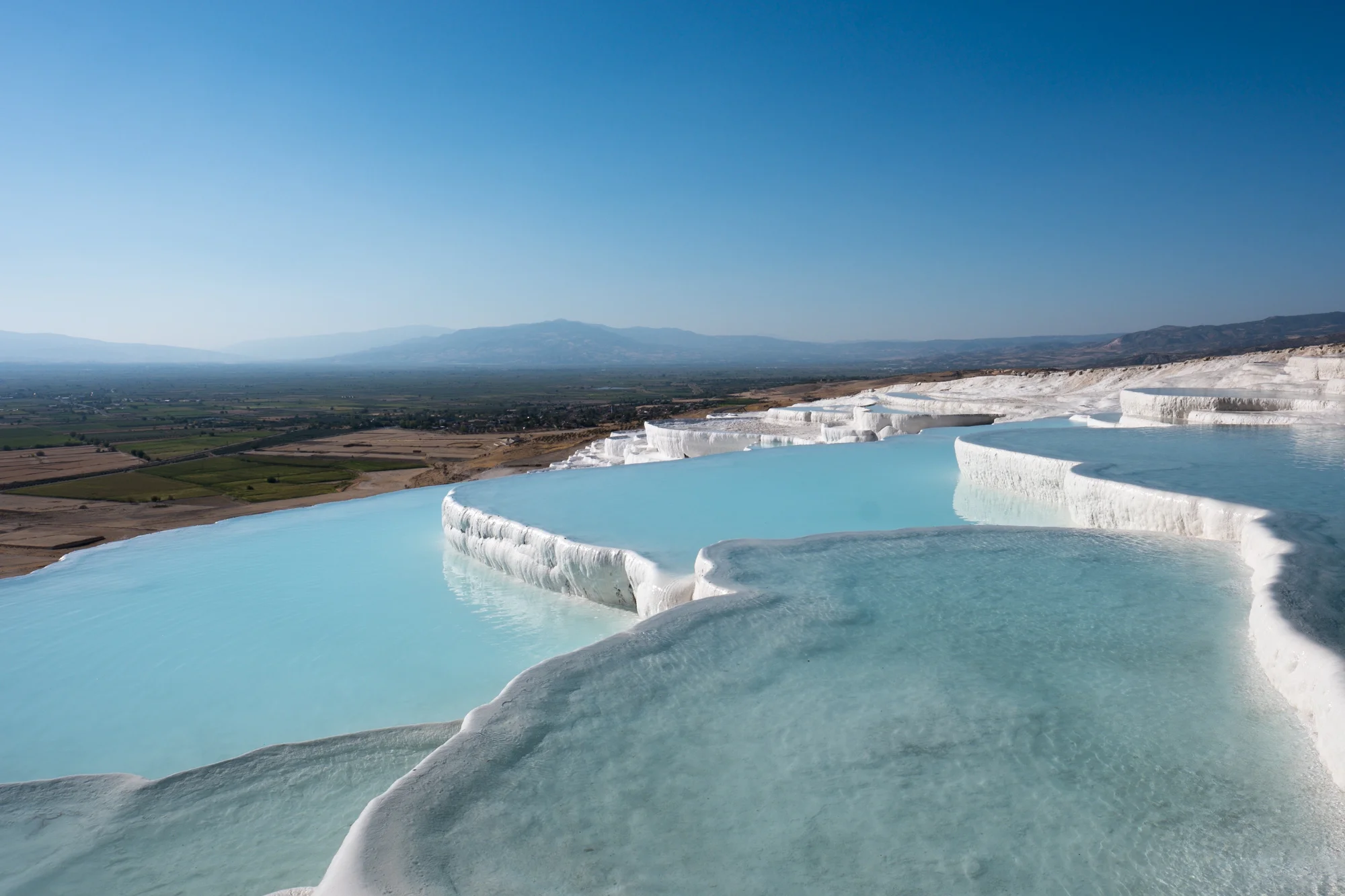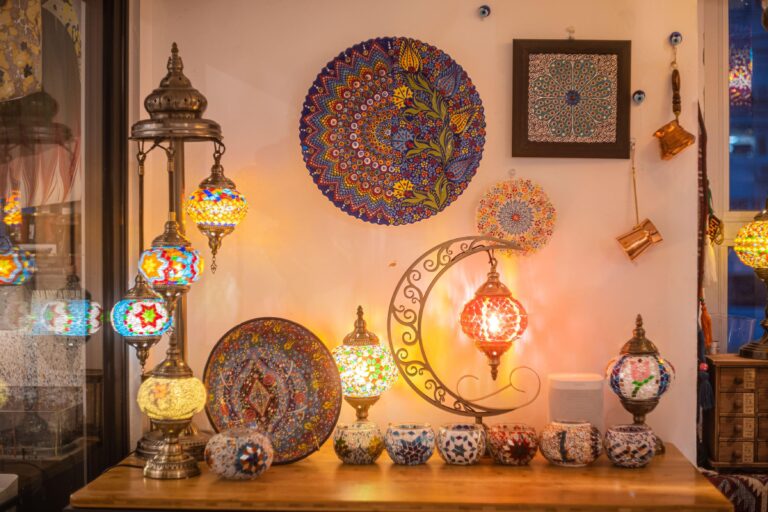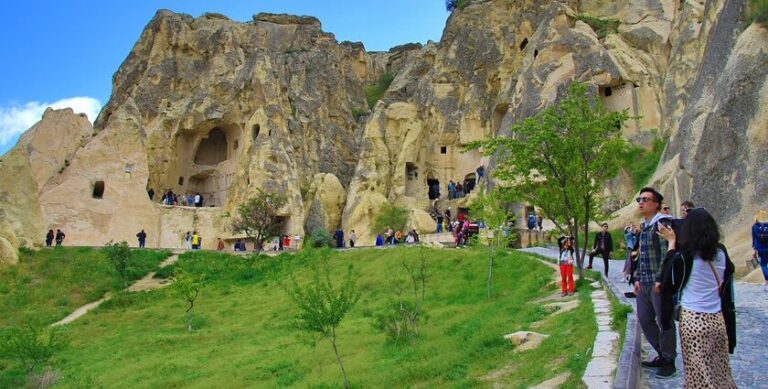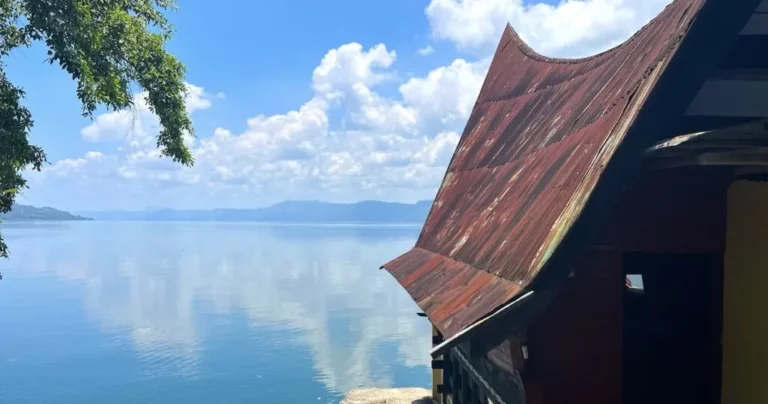Discover Antalya Turkey’s Beachy Paradise with a Historical Twist
Let’s start with a question: what happens when Mother Nature opens a spa and invites the Roman Empire to host an eternal pool party? You get Pamukkale and Hierapolis, a place that looks like a frozen waterfall, feels like a warm bath, and smells faintly of history and sulfur.
In this 3000-word journey (yes, buckle up), we’ll dive into everything you need to know from the geology to the ghost stories, from what to wear to what to eat, and how not to slip down a 2000-year-old marble staircase. So grab your virtual towel and let’s dip in.
The Cotton Castle That Isn’t Cotton (Or a Castle)
Let’s get one thing straight: Pamukkale translates to “Cotton Castle” in Turkish, but don’t expect to see Rapunzel or any spinning wheels.
What you will see is a surreal, snow-white hillside of mineral-rich terraces. These aren’t snow, salt, or marshmallows, but rather travertin, a type of limestone deposited by the area’s natural hot springs. The result? Layers of brilliant white pools that look like they’ve been carved by cloud-surfing angels with OCD.
So, What Exactly Is Travertine? A Science Mini-Break
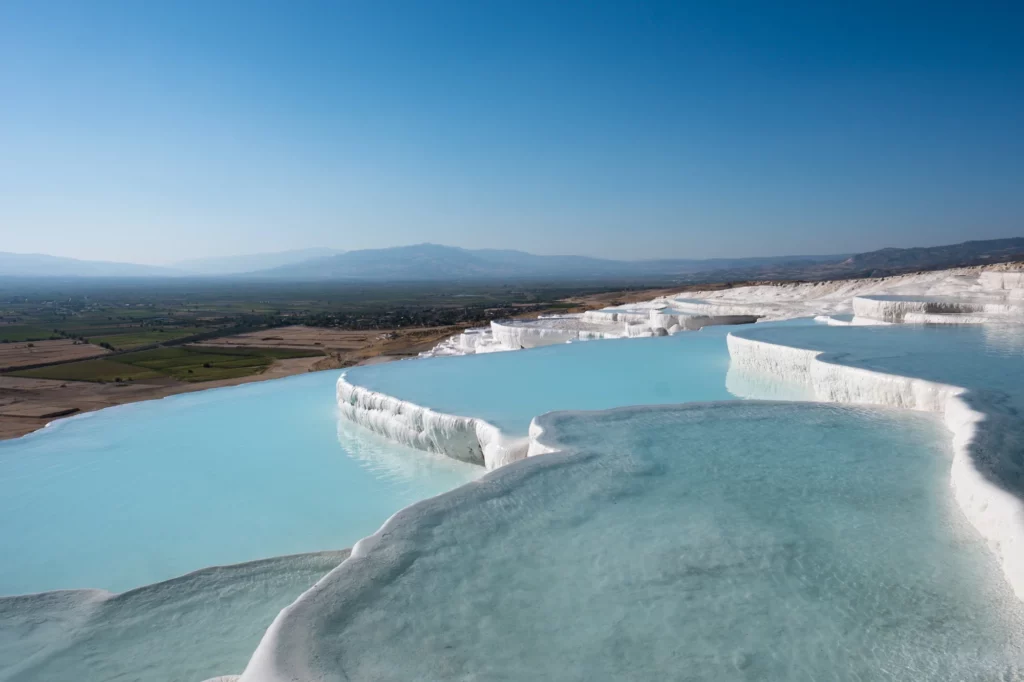
For the nerds among us (we see you, proudly), here’s the 10-second science. Travertine is formed when water with high calcium content from thermal springs hits the surface and loses carbon dioxide. Calcium carbonate precipitates out and forms the terraces.
Or, in everyday language: hot bubbly water runs down a slope, leaves behind a white crust, and voilà,là nature’s very own infinity spa.
Hierapolis: The Spa Town Built for Gods, Emperors, and Instagram
Now just a few flip-flops away from Pamukkale’s white terraces, we find Hierapolis, the ancient Greco-Roman city. Think of it as the VIP lounge of history. Founded in the 2nd century BC, Hierapolis was the place where sickly emperors, philosophers with gout, and wealthy sunseekers came to heal in hot springs and die dramatically in togas.
Today, Hierapolis is a UNESCO World Heritage Site and a strong contender for “Most Dramatic Backdrop for a Selfie While Wearing a Towel.”
The Theatre: Not Just for Drama Queens
If Hierapolis were a Netflix show, the ancient Roman theatre would be the season finale. Carved into the hillside, with seating for over 12,000 spectators, the theatre is a marvel of engineering and ego.
And if you’re lucky, your tour guide will do that thing where they stand in the middle and clap to demonstrate the insane acoustics. Bonus points if they dramatically recite Shakespeare in broken Turkish.
The Sacred Pool (a.k.a. Cleopatra’s Jacuzzi)
Want to swim where legends once soaked? The Antique Pool, also known as Cleopatra’s Pool, is the bubbly highlight of Pamukkale. Rumor has it Marc Antony gifted the spa to Cleopatra because when in love, real estate just doesn’t cut it.
Swim among ancient marble columns, sunken ruins, and overly enthusiastic tourists doing underwater selfies. The water stays at a cozy 36°C (96°F) year-round, and honestly, it’s the only time in your life when “bathing in ruins” sounds like a dream, not a financial disaster.
Estimated Entry Costs and Extras
| Experience | Estimated Cost (TRY) | Notes |
| Pamukkale + Hierapolis Entrance | 700+ | Includes access to terraces and ruins |
| Cleopatra Pool (Swim) | 200–300 | Extra fee, lockers available |
| Local Guide (Optional) | 500–800 | Worth it for juicy Roman gossip |
The Necropolis: Where Hierapolis Got Spooky

Every good ancient city needs a necropolis, right? Hierapolis delivers with one of the largest ancient cemeteries in Turkey, stretching out with over 1,200 tombs.
You’ll find everything from simple rock-cut graves to grand sarcophagi with epic inscriptions like, “I was here first, no parking.” Okay, maybe not that exactly, but the vibe is real.
This spot is oddly peaceful, great for reflection, and slightly creepy when mist rolls in. Don’t worry, tho, ugh ghosts here are classy. Roman ghosts wear sandals and mind their own business.
What to Wear: Your Guide to Not Slipping or Freezing
First off, shoes are not allowed on the travertine terraces. Nope, not even those designer flip-flops with rhinestones. You’ll be walking barefoot on slippery, water-covered stone, so bring:
- A waterproof bag
- A towel
- Non-slip socks (optional but smart)
- Modest swimwear if you’re planning to enter the sacred pool
Also, don’t forget sunscreen unless you want to look like a baked Roman statue by noon.
Best Time to Visit: Avoid the Boil and the Selfie Hordes
Spring (April–June) and Fall (September–November) are your best bets. The water’s warm, the sun’s friendly, and the tour groups haven’t fully swarmed yet.
Avoid mid-summer unless you enjoy slow-roasting in ancient ruins while elbowing fellow tourists for shade.
Food, Glorious Food: What to Eat After You Float in History
By now, you’ve walked through centuries and floated among r, ruins; you’ve earned a feast. Head to Denizli, the nearby town, and try:
- Kebapçı Enver for a mean lamb skewer
- Turkish gözleme (think crispy crepe meets cheesy heaven)
- Fresh pomegranate juice is sold in local stalls
- And if you’re brave: kokoreç (intestine sandwich, surprisingly delicious)
For dessert? Turkish delight, of course. Because what better way to cap a day of time travel than with sugar?
How to Get There Without Losing Your Mind
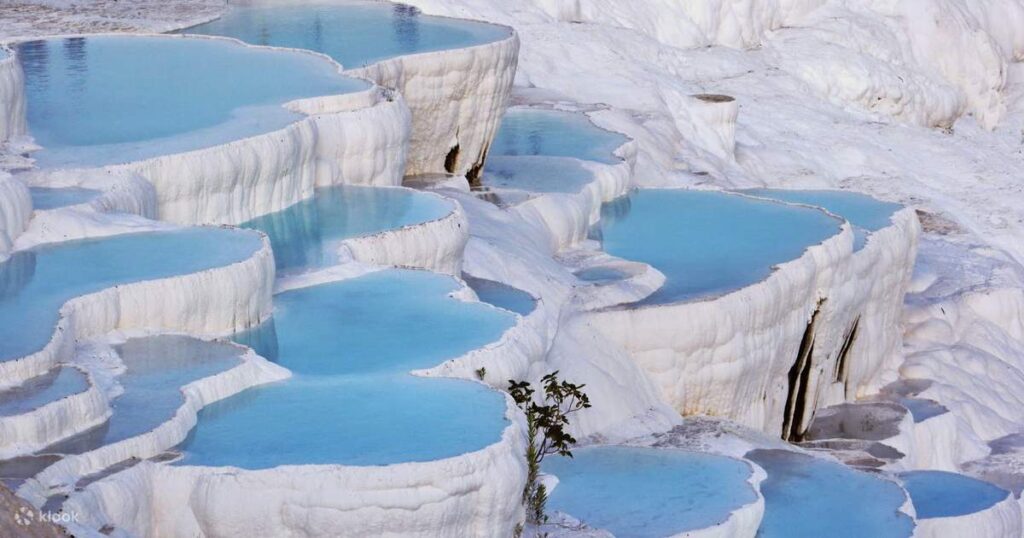
You can reach Pamukkale by:
- Bus from Denizli (20–30 mins)
- Direct tours from major cities like Istanbul, Antalya, or Izmir
- Car rental if you’re adventurous and okay with Turkish road signs
Nearest airport? Denizli Cardak Airport (DNZ). From there, it’s about an hour’s ride to the white terraces of wonder.
Where to Stay: Sleep Like a Roman Emperor (But With Wi-Fi)
You’ll find everything from budget hostels to boutique hotels with natural hot springs:
| Hotel Name | Type | Nightly Rate (TRY) | Perks |
| Venus Suite Hotel | Mid-range | 1500–2500 | Shuttle service, great breakfast |
| Melrose House Hotel | Budget | 1000–1500 | Cozy, family-run vibe |
| Doga Thermal Hotel | Luxury | 3000+ | Thermal spa, epic breakfast spread |
Book early in high season or risk ending up in a Roman tent replica (not real, but still risky).
Cultural Tips: Don’t Be That Tourist
- Respect the terraces, no stomping or soap bubbles (yes, some people tried that)
- Cover up when outside the pools, bikinis are for the bath, not the ruins
- Learn a few words in Turkish: “Merhaba” (hello) and “Teşekkür ederim” (thank you)
- Don’t take ancient stones as souvenirs. They will stop you at the airport, and it won’t be fun
Instagram vs. Reality: Yes, It’s Still That Pretty
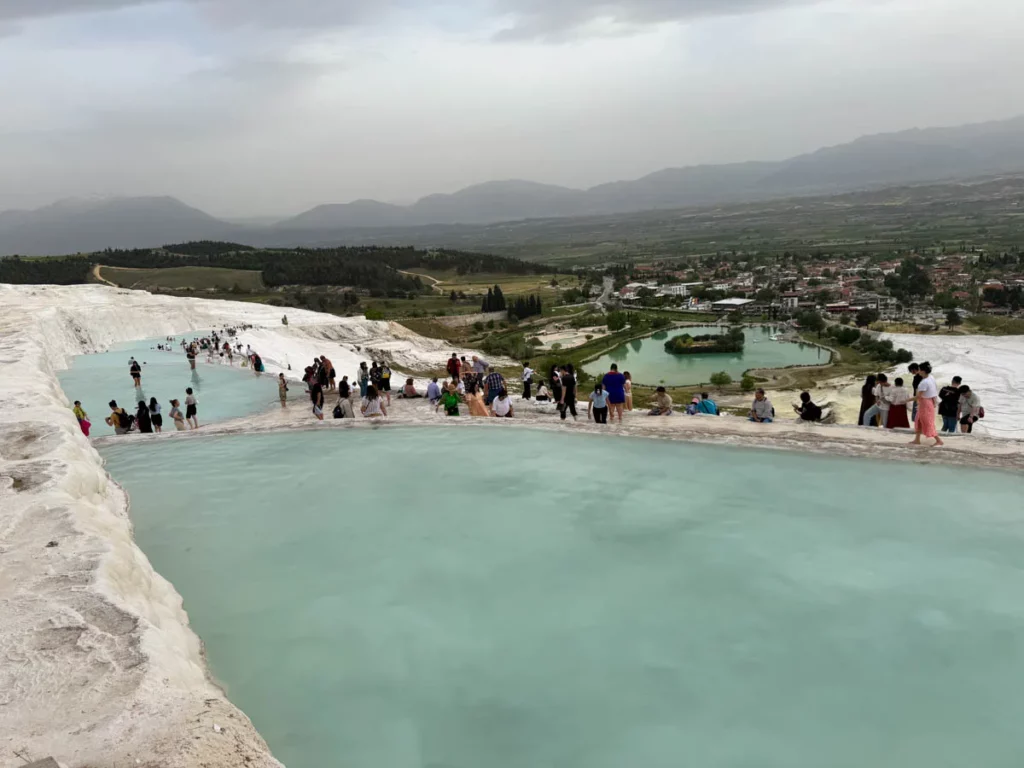
You’ve seen the Instagram pics: endless white curves, crystal-blue pools, flowing dresses. And guess what? Pamukkale is that photogenic.
But also… There will be crowds, awkward sunburns, and someone yelling in a foreign language about their drone getting stuck in a tree.
Still, no filter needed. Just don’t forget to soak it all in without a screen between you and the view.
Conclusion: Why Pamukkale and Hierapolis Deserve a Spot on Your Life List
So there you have it: a natural phenomenon that looks like it was designed by ancient architects high on spa fumes, combined with the dramatic ruins of a Roman health retreat. Pamukkale and Hierapolis are more than just a tourist attraction; they’re a full sensory experience. You’ll feel the warm water on your toes, the wind over marble ruins, and maybe just maybe hear the faint echoes of a Roman poet wondering where his sandals went.
This is Turkey at its most whimsical and wondrous. Whether you’re a history buff, a wellness junkie, or just someone who loves fancy puddles, Pamukkale and Hierapolis will leave you wide-eyed and slightly pruny.
FAQs: Pamukkale and Hierapolis
- Can I swim in the white terraces of Pamukkale?
Only in designated areas. Most terraces are protected, but there are parts where you can wade and enjoy the warm water safely. - Is Hierapolis worth visiting?
Absolutely. It’s not just ruins, it’s a window into ancient life, complete with a theatre, baths, and a ghost-approved cemetery. - How long should I plan to spend at Pamukkale and Hierapolis?
At least 4–5 hours if you want to explore leisurely, take photos, and enjoy the pool. A full day if you’re soaking and strolling. - Is it family-friendly?
Yes, though the travertines can be slippery for little ones. Hold hands, go slow, and bring lots of snacks. - What’s one thing I shouldn’t miss?
A swim in Cleopatra’s Pool. Floating next to ancient columns while sipping fresh juice? That’s a story your Instagram followers will never beat.

